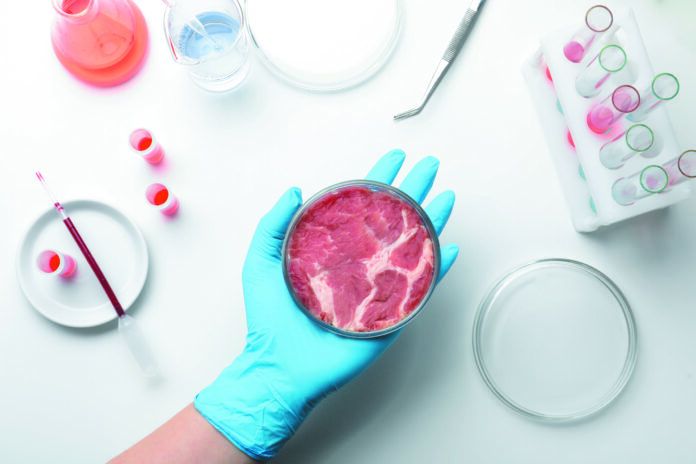A. David Kaplan, PhD, the Stern Family Endowed Professor of Engineering and Chair of the Department of Biomedical Engineering, answers: “The first cultivated meat product is already on the market in Singapore, but you will not find any in your U.S. supermarket yet. Pending final approved regulations from the U.S. Department of Agriculture (USDA) and U.S Food and Drug Administration, there are expectations the first U.S. products will be on the market in 2022 (clearly marked, of course, so you know what you’re getting).
“The environmental impact of raising animals for food is well understood (see page 4 for more information). With the rising consumption of meat in developing countries (along with its continued popularity in developed nations) and the growing world-wide population, a sustainable protein option would be good for the earth and the people on it. Cultivated meat would allow meat eaters to continue to enjoy a food they love—with less environmental impact. In addition to sustainability, lab grown meat doesn’t involve antibiotics, and it could reduce the threat of food-borne pathogens such as salmonella and E coli.
“Meat is the muscle and fat of an animal. All animals (including humans) have the ability to grow new muscle and fat and repair damaged tissue. By taking some of the cells that become new muscle and fat in a cow, for example, and creating the right conditions for them to replicate, we can ‘grow’ meat outside of the animal. From there, regular meat processing techniques, such as grinding it into hamburger, can be applied to prepare it for market. As opposed to plant-based meats, cultivated meat is actually meat, as it is made from the same cells as in the animal—but without the animal. It shouldn’t differ too much (nutritionally or from a flavor and texture point of view) from conventionally grown and farmed meat, although it would be possible in some cases to tailor or improve the nutritional content.
“There is a lot to do before cellular agriculture becomes commonplace as an alternative to traditional livestock-grown meat. It is currently expensive, requires special facilities, and is not able to produce meat on the same scale as conventional farming. The technology to replicate all types of meat is in its infancy. My lab has received a five-year, $10 million grant from the USDA to put together a consortium of laboratories to continue to develop this technology, so stay tuned for more information.”
























